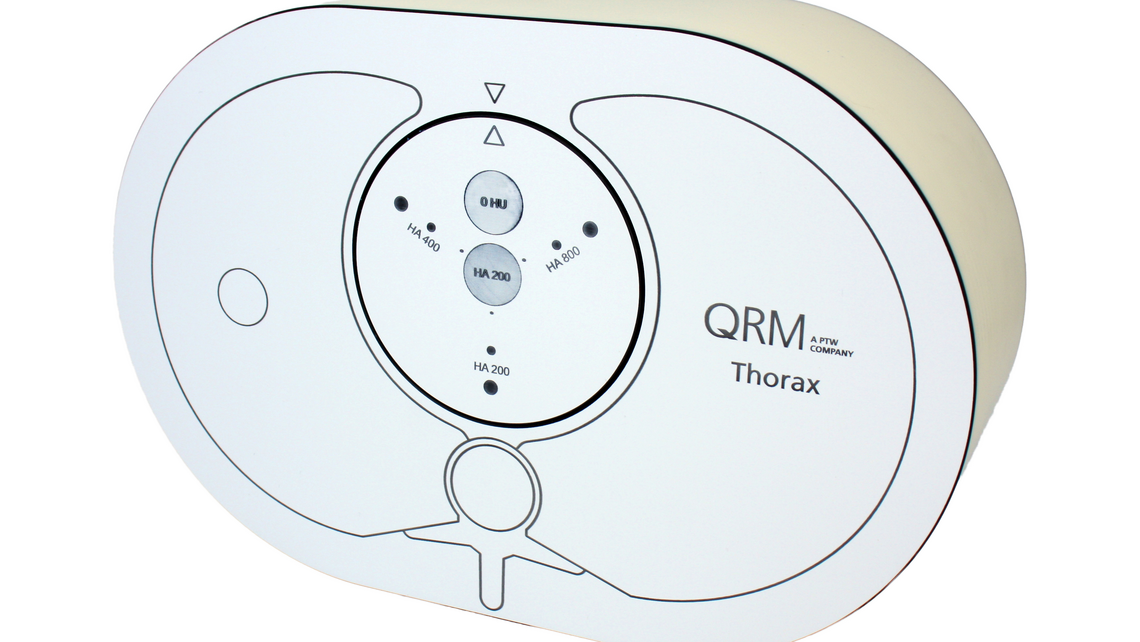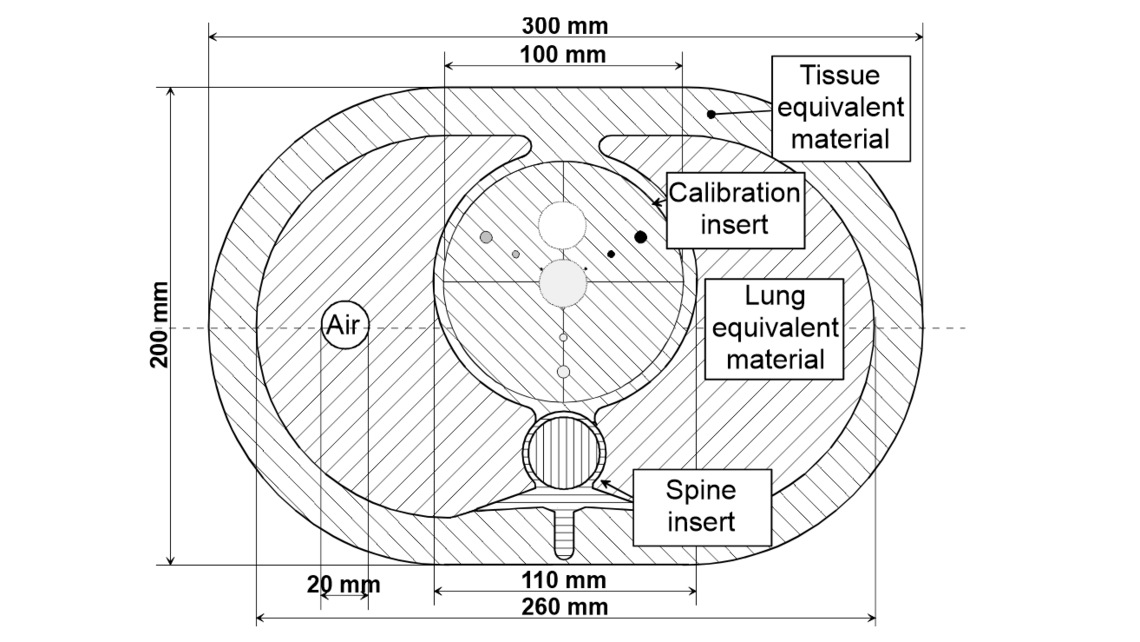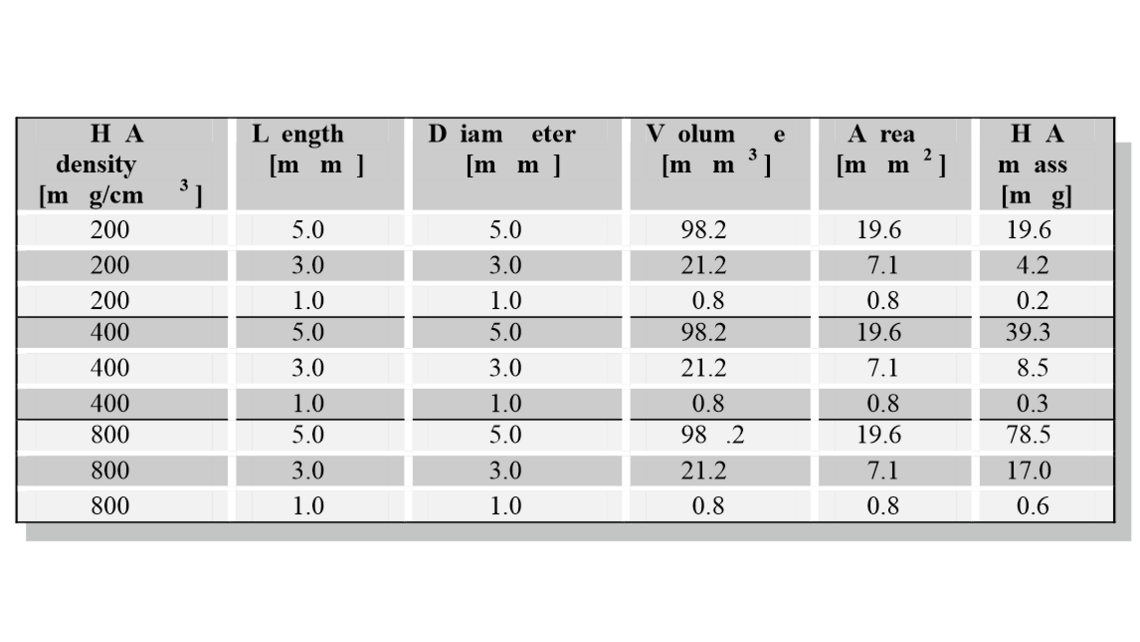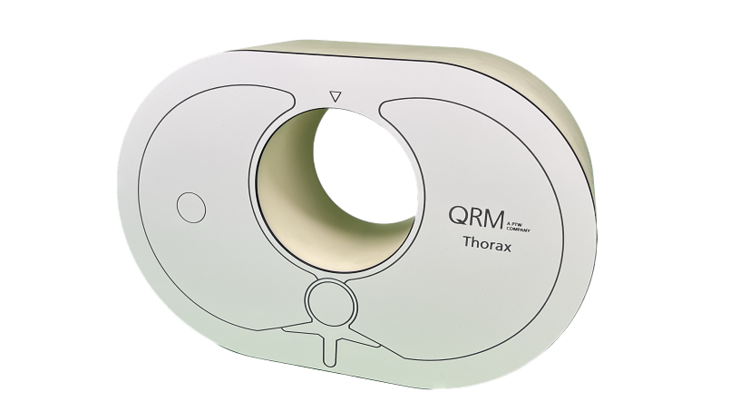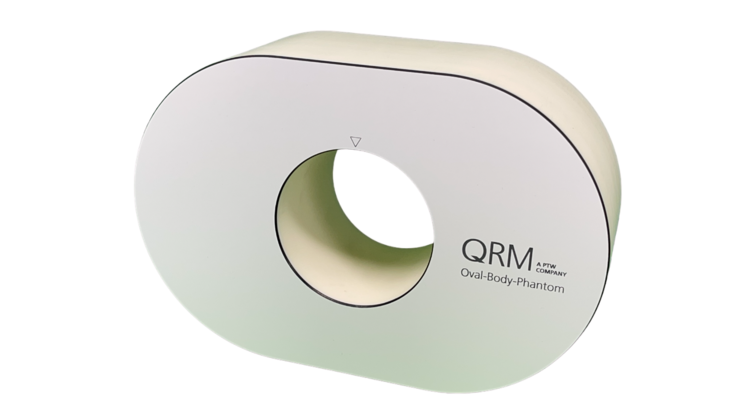- Calibration standard for cardiac CT
- Investigate the detectability of coronary calcifications
- Achieve reproducible scoring results
- Include CaHA targets in different sizes and density
It is ideally suited to investigate the influence of scan parameters on the detectability of calcifications. It is designed in a modular construction principle. The phantom is made up of two parts: Thorax Phantom (QRM-20100) and Calcium Scoring Phantom, D100 (QRM-10146)
The Thorax Phantom (QRM-20100) comprises artificial lung lobes and a bone-like spine insert (spongiosa and corticalis) surrounded by soft tissue-equivalent material. The plastics used in this phantom mimic human tissues in the thorax with respect to density and X-ray attenuation characteristics of a human thorax.
The Calcium Scoring Phantom, D100 (QRM-10146) contains nine cylindrical calcification inserts in varying size and calcium hydroxyapatite (CaHA) density (see Table). Furthermore, there are two larger calibration inserts (water-equivalent and CaHA material). All inserts are embedded in a soft tissue-equivalent material (approx. 30 HU at 120 kV).
In order to obtain absolute values for the calcium mass, a calibration measurement with the central calibration insert of known CaHA density of 200 mg CaHA/cm³ can be carried out. The water-equivalent insert serves as a further calibration standard. In practice, the CT number of water should always be checked in the given set up. If the measured value deviates from zero, the known deviation can be taken into account in the applied scoring method.


